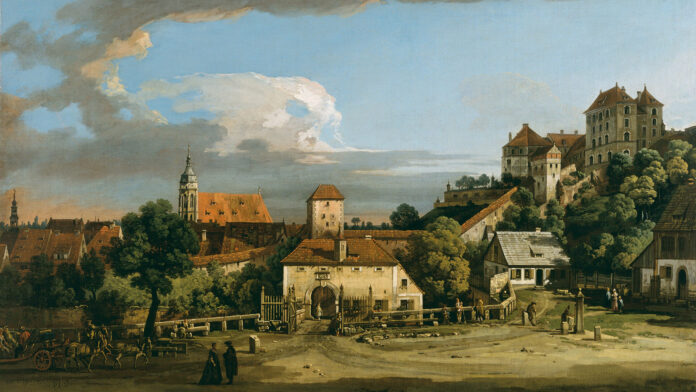El trastorno de la personalidad narcisista es una enfermedad de salud mental en la cual las personas tienen un aire irrazonable de superioridad. Necesitan y buscan demasiada atención, y quieren que las personas las admiren. Es posible que a las personas con este trastorno les cueste comprender o no les importen los sentimientos de los demás. Sin embargo, detrás de esta máscara de absoluta confianza propia, no están seguras de ellas mismas y reaccionan fácilmente a la más mínima crítica.
El trastorno de la personalidad narcisista causa problemas en muchas áreas de la vida, como las relaciones interpersonales, el trabajo, la escuela o los asuntos financieros. En general, las personas con trastorno de la personalidad narcisista pueden sentirse infelices y decepcionadas cuando no les hacen favores especiales o no reciben la admiración que creen merecer. Pueden sentir que sus relaciones interpersonales son conflictivas y poco satisfactorias, y es posible que los demás no disfruten de su compañía.
El tratamiento del trastorno de la personalidad narcisista se centra en la terapia de conversación o psicoterapia.
Por lo general, comienza en la adolescencia o a principios de la adultez. Algunos niños pueden manifestar rasgos de narcicismo, pero esto suele ser típico de la edad, por lo que no significa que tendrán trastorno de la personalidad narcisista en el futuro.
Los síntomas del trastorno de la personalidad narcisista y su gravedad pueden variar. Las personas que tienen este trastorno pueden:
A la vez, las personas con trastorno de la personalidad narcisista tienen dificultad para reaccionar a aquello que perciben como una crítica. Pueden comportarse del siguiente modo:
Las personas que tienen un trastorno de la personalidad narcisista pueden no querer pensar que les pasa algo malo, así que no suelen buscar tratamiento. Si buscan tratamiento, es más probable que lo hagan para tratar síntomas de depresión, consumo excesivo de sustancias o de alcohol, u otro problema de salud mental. Es posible que sea difícil aceptar aquellas cosas que consideran insultos a su autoestima y continuar con un tratamiento.
Si reconoces aspectos de tu personalidad que son frecuentes en el trastorno de personalidad narcisista o si te sientes abrumado por la tristeza, considera la posibilidad de contactar a un profesional de salud mental o a un proveedor de atención médica de confianza. Obtener el mejor tratamiento para ti puede ayudarte a tener una vida más plena y agradable.
No se sabe cuál es la causa del trastorno de la personalidad narcisista. Posiblemente sea una causa compleja. El trastorno de la personalidad narcisista puede asociarse con:
Aunque se desconoce la causa del trastorno de la personalidad narcisista, algunos investigadores creen que la sobreprotección o la negligencia de los padres durante la crianza puede influir en los niños que nacen con tendencia a desarrollar este trastorno. La genética y otros factores pueden intervenir en el desarrollo del trastorno de la personalidad narcisista.
Las complicaciones del trastorno de la personalidad narcisista, y otras afecciones que pueden acompañar este trastorno, incluyen las siguientes:
Como se desconoce la causa del trastorno de la personalidad narcisista, no se sabe cómo prevenirlo. Sin embargo, esto puede ayudar:
En el trastorno de personalidad narcisista, la persona expresa la necesidad constante de alimentar sus fantasías de grandiosidad y su autoestima a través de actitudes y comportamientos a menudo exagerados. Es intolerante a la crítica y tiende a reaccionar con ira, o enmascarando la vergüenza y la humillación con una actitud fría. También puede llegar a ser violento como consecuencia de una herida narcisista.
En las clasificaciones diagnósticas actuales (DSM – 5, 2013) se describe un tipo de trastorno de personalidad narcisista caracterizado por la presencia de sentimientos de importancia y grandiosidad, fantasías de éxito, necesidad exhibicionista de atención y explotación en las relaciones interpersonales.
Sin embargo, desde un punto de vista más dinámico, y basado en otro tipo de clasificaciones diagnósticas (PDM-2 – Lingiardi y Mcwilliams, 2017), la investigación y la práctica clínica, se defiende la existencia de dos subtipos de individuos narcisistas, realizando una distinción entre un subtipo grandioso y un subtipo vulnerable (Dickinson et al., 2003; Gabbard, 1989, 1998; Gersten, 1991; Rovik, 2001; Smolewska et al., 2005; Wink, 1991).
Por un lado Kernberg (1970, 1974, 1998) propone un trastorno narcisista de tipo envidioso y codicioso, en el que la persona requiere la atención y la aprobación constante de los demás. Por otro lado Kouth (1971, 1977, 1984) describe un trastorno narcisista más caracterizado por vulnerabilidad y fragmentación del Ego.
Rosenfeld (1987) distingue entre el narcisista con “piel dura” y el narcisista con “piel fina”. Wink (1991) distingue entre “narcisismo manifiesto” (grupo Grandiosidad-Exhibicionismo, caracterizado por ser exhibicionista, extrovertido, confiado en sí mismo, agresivo) y “narcisismo encubierto” (grupo Vulnerabilidad-Sensibilidad, más introvertido, a la defensiva, ansioso y vulnerable). Gabbard (2002) resume estos dos aspectos del Trastorno Narcisista de Personalidad situándolos a lo largo de un continuo entre dos extremos: el polo del “narcisista inconsciente” y el polo del ” narcisista hipervigilante”.
I. El narcisista inconsciente
El narcisista grandioso, también considerado como narcisista inconsciente (Gabbard, 1989, 1998) debido a su falta de consciencia acerca de su propio impacto en los demás, ha sido descrito como arrogante, explotador y envidioso (Dickinson et al., 2003). Acostumbra a regular su autoestima a través del auto-enaltecimiento, la negación de sus debilidades, y a manifestar reacciones de ira ante la insatisfacción de sus expectativas, devaluando a las personas percibidas como una posible amenaza para su autoestima.
Según la investigación, los narcisistas grandiosos refieren problemas sociales en relación con la dominancia y venganza en sus relaciones (Pincus et al., 1990), aunque no suele destacarse un elevado malestar acerca de su estilo de interacción más allá de la propia ofensa por considerarse tratados de una manera que no merecen.
Según Kohut (1971), este tipo de rasgos narcisistas pueden estar relacionados con una menor integración del self rudimentario (formado en la infancia) con el resto de la personalidad, debido a la situaciones de duplicación inadecuada por parte de los padres (es decir, la alabanza y el fomento excesivo de expresiones de aceptación, que informan al niño que es ” bueno ”). En un intento de reanudar el proceso de crecimiento psicológico y satisfacer las necesidades infantiles no cubiertas, la persona narcisista continúa expresando grandiosidad y exhibicionismo durante la etapa adulta.
De manera general, el narcisista inconsciente puede presentar los siguientes rasgos y estilos en la interacción:
- No es consciente de las reacciones de los demás.
- Es arrogante y agresivo.
- Se centra en sí mismo.
- Necesita ser el centro de atención.
- “Transmite” pero “no recibe”.
- Es aparentemente impermeable a la idea de ser herido por los demás.
II. El narcisista hipervigilante o vulnerable
El subtipo vulnerable ha sido considerado bajo múltiples etiquetas, entre las que se incluyen el narcisista hipervigilante (Gabbard, 1989), hipersensitivo (Hendin et al., 1997), vulnerable (Gersten, 1991; Wink, 1991) y encubierto (Akhtar et al., 1982; Cooper, 1998; Wink et al., 1997). Se trata de un constructo discutido en tanto tiende a presentarse en forma de vergüenza, retraimiento y aparente empatía, rasgos que pueden considerarse justificados y/o asociados a distintos estilos de personalidad .
De manera general, las distintas investigaciones señalan que la persona en el subtipo vulnerable es menos capaz de utilizar el auto-enaltecimiento para modular su autoestima y, por ello, a menudo depende del feedback externo para regularla.
Las personas con rasgos narcisistas más encubiertos pueden experimentar mayor ansiedad en el desarrollo de relaciones debido a la naturaleza débil de su autoestima. En algunos casos, la decepción e hipersensibilidad derivados de las expectativas no alcanzadas pueden llegar a provocar aislamiento y evitación (Cooper, 1998, Gabbard, 1989, 1998; Gersten, 1991).
A pesar de que el narcisismo encubierto tiene la misma necesidad de atención que el narcisismo grandioso, las fantasías de éxito y valía son menos conscientes, y tienden a aparecer únicamente en las relaciones más cercanas (Kernberg, 1975). En este segundo subtipo aparece un mayor sentido de vulnerabilidad, caracterizado por sensibilidad extrema, una regulación emocional ineficaz y sentimientos de inferioridad (Hendin et al., 1997).
Según Kohut (1971), las dificultades de regulación emocional podrían estar relacionadas con una menor sensibilidad parental en las respuestas a la expresión emocional del niño durante la infancia, y tener como consecuencia una excesiva dependencia de mecanismos de defensa para la regulación del autoconcepto y las emociones (Pistole, 1995).
Algunos de los rasgos más característicos del subtipo vulnerbale o hipervigilante son los siguientes:
- Es muy sensible a las reacciones de los demás.
- Se inhibe, es tímido o incluso desaparece.
- Dirige la atención a los demás más que a sí mismo.
- Evita ser el centro de atención.
- Escucha a los demás con cuidado para resaltar la falta de respeto o crítica.
- Se siente herido con facilidad; experimenta con facilidad sentimientos de vergüenza o humillación.
Características diferenciales del Trastorno de Personalidad Narcisista respecto a otros trastornos de la personalidaad
El narcisismo vulnerable puede presentar algunas características comunes con al menos dos trastornos de personalidad según los criterios actuales de las clasificaciones diagnósticas (DSM-V, CIE-11): el trastorno límite y evitativo de personalidad.
En cuanto al diagnóstico diferencial con el trastorno límite de personalidad, la labilidad emocional que aparece en el trastorno de personalidad narcisista vulnerable se encuentra influida por sus dificultades manejando su autoestima y la frustración, mientras que en el trastorno límite se presenta como el resultado de necesidades no realistas, como puede ser la necesidad de un cuidador fuerte para regular sus temores a la independencia (Masterson, 1993).
Mientras en el trastorno de personalidad narcisista (inconsciente) suele estar presente un “yo grandioso” y cierta incapacidad de aceptar la dependencia, en el Trastorno Límite de Personalidad el concepto de “sí mismo” sería más estable, con tendencia a establecer relaciones de dependencia (anaclitismo).
Según Rinsley (1980, 1989), mientras que la persona con trastorno límite de personalidad habría sufrido, durante la niñez, un paro en ambas fases del proceso de separación-individuación (acercamiento y separación), el paciente narcisista habría sufrido una disociación entre la fase de acercamiento (que se ha podido desarrollar) y la fase de separación, que se ha quedado bloqueada.
Por otro lado, entre los rasgos descritos en el Trastorno de Personalidad Evitativo, existen aspectos que pueden solaparse con el narcisismo vulnerable, como la tendencia a manifestar vergüenza y/o temor en las relaciones, asi como también el temor a ser humillado, rechazado o avergonzado. En el caso del narcisismo vulnerable puede aparecer cierta evitación de las relaciones, aunque dirigida a protegerse de la decepción y vergüenza ante las expectativas incumplidas de los demás, en contraste con los miedos al rechazo social o proporcionar una impresión negativa típicos del trastorno evitativo.
El caso
A Carlos no le preocupa en absoluto la posibilidad de ser criticado por los demás: se hace notar por su alto tono de voz, exagerando a menudo sus logros y capacidades ante sus amigos y compañeros de trabajo. Carece de empatía en general, es arrogante, soberbio, explota a los demás en su beneficio y cree que los demás le envidian.
Estas características de Carlos hacen pensar que puede presentar un Trastorno Narcisista de Personalidad (TPN) de tipo inconsciente o grandioso.
Clasificación DSM V & CIE 11
El Trastorno Narcisista de Personalidad (DSM – 5) se caracteriza por un patrón dominante de grandeza (en la fantasía o en el comportamiento), necesidad de admiración y falta de empatía, que comienza al principio de la edad adulta en distintos contextos y se manifiesta por 5 o más de los hechos siguientes:
- Tiene sentimientos de grandeza y prepotencia (e.g. exagera sus logros y talentos, espera ser reconocido como superior sin contar con los correspondientes éxitos).
- Está absorto en fantasías de éxito , poder, brillantez, belleza o amor ilimitado.
- Cree que es “especial” y único y que sólo pueden comprenderle o sólo puede relacionarse con otras personas (o instituciones) especiales o de alto status.
- Tiene una necesidad excesiva de admiración.
- Muestra un sentimiento de privilegio (es decir, expectativas no razonables de tratamiento especialmente favorable o de cumplimiento automático de sus expectativas).
- Explota las relaciones interpersonales (es decir, se aprovecha de los demás para sus propios fines).
- Carece de empatía: no está dispuesto a reconocer o a identificarse con los sentimientos y necesidades de los demás.
- Con frecuencia envidia a los demás o cree que los éstos sienten envidia de él.
- Muestra comportamientos o actitudes arrogantes, de superioridad.
Según la Clasificación Internacional de los Trastornos Mentales y del Comportamiento de la OMS (ICD-11, 2018), este trastorno se incluye en la categoría (6D10.Z), correspondiente a los trastornos de personalidad de severidad no especificada, en la que se incluyen los trastornos de personalidad no considerados en las nuevas categorías CIE: La Personalidad excéntrica. La Personalidad inestable. La Personalidad inmadura. La Personalidad pasivo-agresiva. La Personalidad psiconeurótica. El Trastorno narcisista de la personalidad. El Trastorno excéntrico de la personalidad. El Trastorno inestable de la personalidad. El Trastorno inmaduro de la personalidad. El Trastorno pasivo-agresivo de la personalidad. El Trastorno psiconeurótico de la personalidad.
Referencias
- Akhtar, S. y Thomson, J.A. (1982) Overview: Narcissistic personality disorder. American Journal of Psychiatry, 139, 12-20.
- American Psychiatric Association (2013). Diagnostic and Statistical Manual of Mental Disorders, 5th edition, DSM-5. American Psychiatric Publishing.
- Cooper, A. (1988) Further developments in the clinical diagnosis of narcissistic personality disorder. En E. Ronningstam (Ed.) Disorders of Narcissism: Diagnostic, clinical and empirical implications (pp. 53-74). Washington, DC: American Psychiatric Press, Inc.
- Dickinson, K.A., Pincus, A.L. (2003) Interpersonal analysis of grandiose and vulnerable narcissism. Journal of Personality Disorders, 17¸188-207.
- Gabbard, G.O. (1989) Two subtypes of narcissistic personality disorder. Bull Menninger Clin, 53, 527-532
- Gabbard, G.O. (1998) Transference and countertransference in the treatment of narcissistic patients. En E.F. Ronningstram (Eds) Disorders of Narcissism. Washington DC: American Psychiatric Press (pp.125-145).
- Gersten, S.P. (1991). Narcissistic personality disorder consists of two subtypes. Psychiatr Times, 8, 25-26.
- Hendin, H.M. y Cheeck, J.M. (1997). Assessing hypersensitive narcissism: A reexamination of Murray’s Narcissism Scale. Journal of Research in Personality, 31, 588-599.
- Kernberg, O. (1975) Borderline conditions and pathological narcissism. New York: Jason Aronson.
- Lingiardi, V., McWilliams, N.(2017). The Psychodynamic Diagnostic Manual Version 2 (PDM-2). The Guilford Press.
- Masterson, J.F. (1993). The emerging self: A developmental, self and object relations approach to the treatment of the closet narcissistic disorder of the self. New York: Brunner/Mazel.
- Pincus, A.L. y Wiggins, J.S. (1990). Interpersonal problems and conceptions of personality disorders. Journal of Personality Disorders, 4, 342-352.
- Pistole, M.C. (1995) Adult attachment style and narcissistic vulnerability. Psychoanalytic Psychology, 12, 115-126.
- Kohut, H. (1971). The analysis of the self. New York: International University Press.
- Rovik, J.O. (2001). Overt and covert narcissism: turning points and mutative elements in two psychotherapies. British Journal of Psychotherapy, 17, 435-477.
- Russ, E., Schedler, J. Bradley, R., Western D. (2008). Redefining the construct of Narcissistic Personality Disorder: diagnostic criteria and subtypes. American Journal of Psychiatry, 165, 1473-1481.
- Smolewska, K., Dion, K.L. (2005). Narcissism and adult attachment: a multivariate approach. Self and Identity, 4, 59-68
- Watson, P.J., Hickman, S.E., Morris, R.J., Milliron, J.T. y Whiting, L. (1993). Narcissism, self-esteem and parental nurturance. The Journal of Psychology, 129, 61-73.
- Wink, P. (1991) Two faces of narcissism. Journal Pers Soc Psychol, 61, 590-597.
- Wink, P. y Donahue, K. (1997). The relation between two types of narcissism and boredom. Journal of Research in Personality, 31, 136-140.
- World Health Organization (1992-1994). International statistical classification of diseases and related health problems tenth revision ICD-10. World Health Organization.
- World Health Organization (2018). International statistical classification of diseases and related health problems ICD-11. World Health Organization
© Psise: Servicio de Psicología Clínica del Desarrollo. Unidad de Observación y Diagnóstico Funcional.









 Causas
Causas Trastorno de personalidad narcisista
Trastorno de personalidad narcisista






